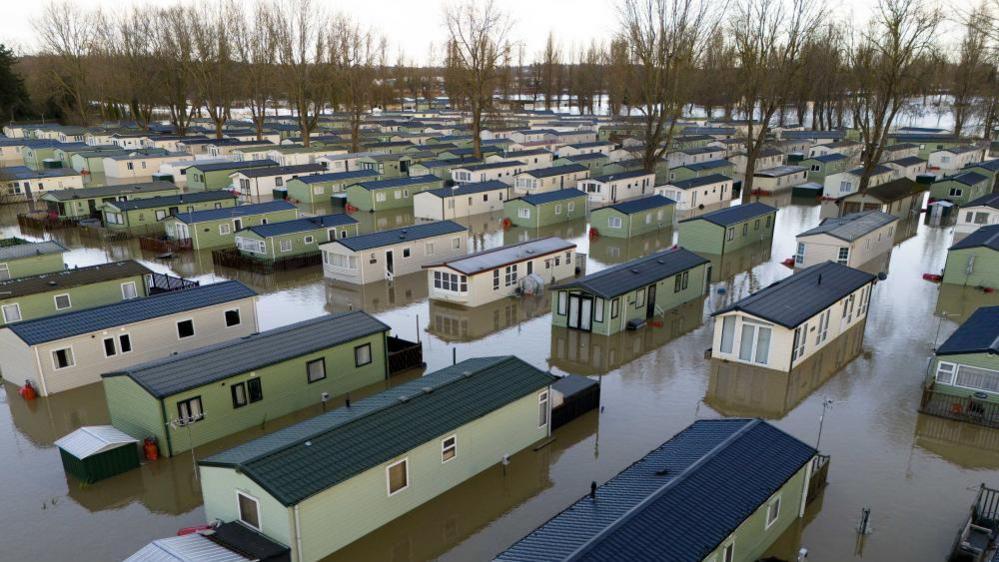Flooding in Leicestershire: Your questions answered
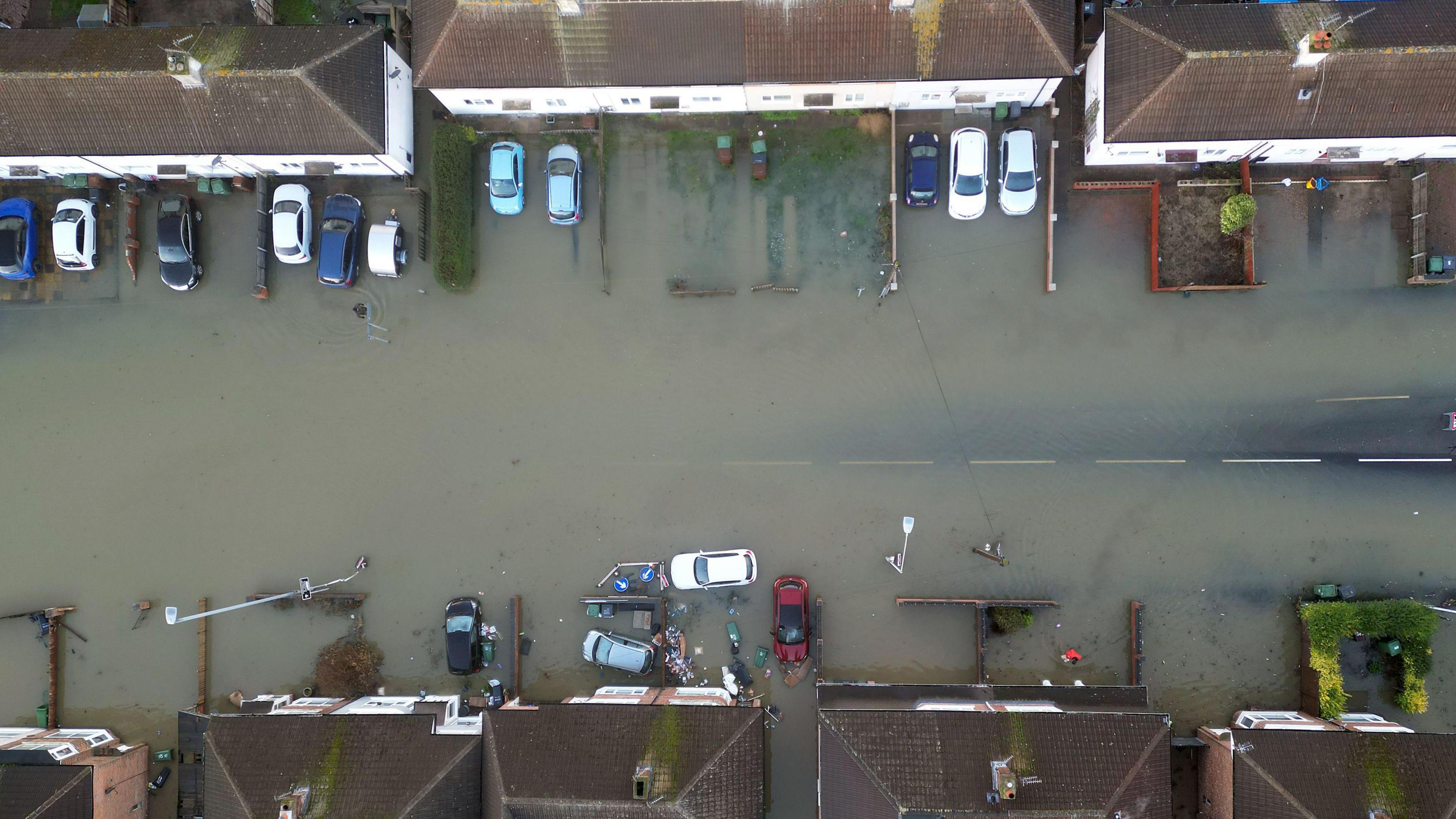
About 800 homes and businesses were affected by widespread flooding in Leicester, Leicestershire and Rutland
- Published
After hundreds of homes were flooded, dozens of people rescued and a major incident declared in Leicester, Leicestershire and Rutland last week, many are concerned about it happening again.
Hundreds were displaced as about 800 properties were affected when widespread flooding hit the two counties.
On the morning of Monday 6 January alone, Leicestershire Fire and Rescue Service said it received more than 200 calls including rising water levels, stuck cars and evacuations.
And for the first time, a government agency text alert was used for a severe, risk-to-life warning in Barrow-upon-Soar, where Proctors Park was evacuated to keep residents safe.
Matthew Gable, from the Environment Agency (EA), has answered questions sent in by our audience following the heartache and disruption.
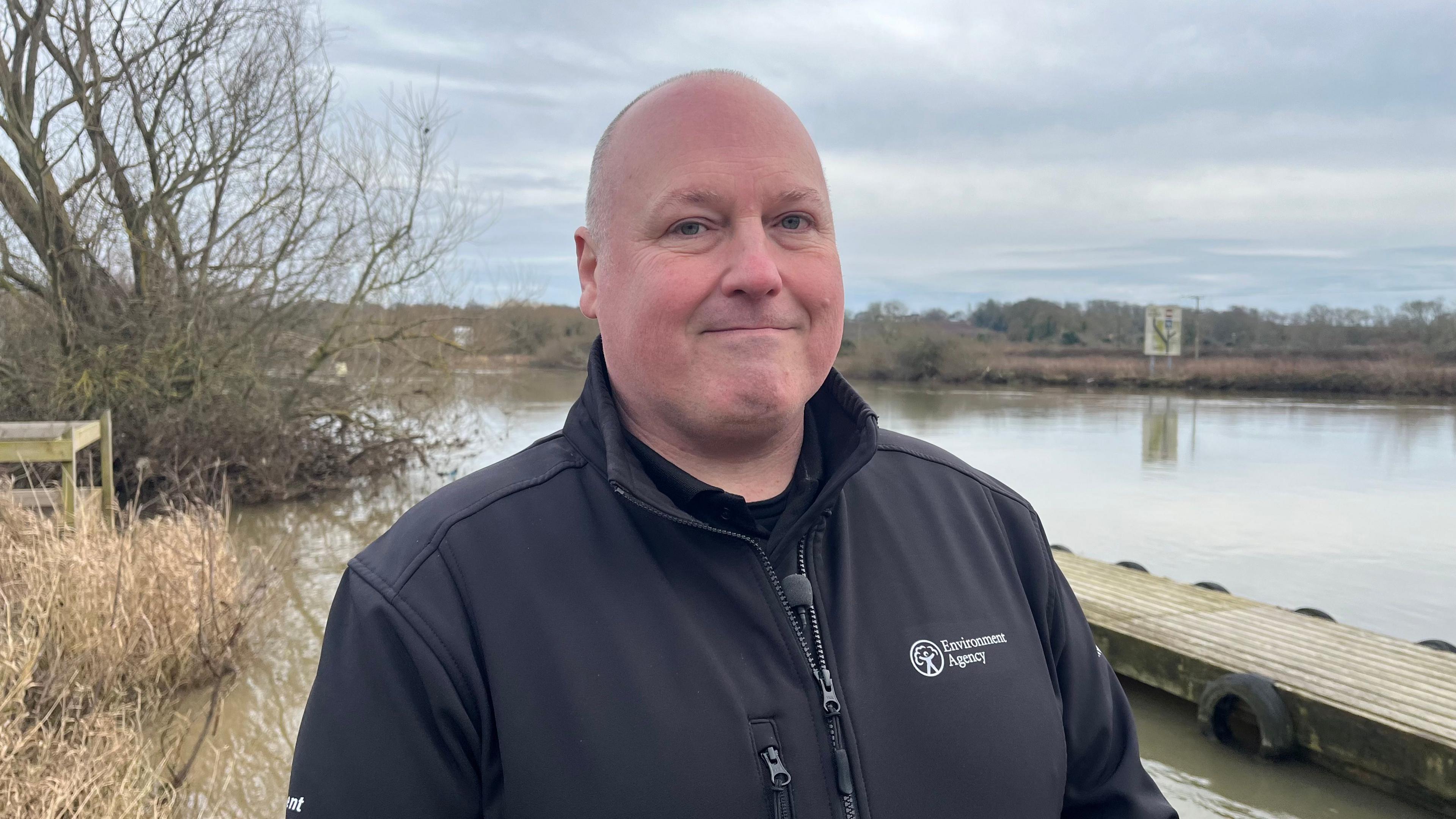
Matthew Gable answered questions submitted by readers
Who is responsible for blocked drains and culverts?
Mr Gable, area incident team manager at the agency, said: "At the Environment Agency, we are responsible for all of the main river network, so all the flood defence infrastructure and the culverts on those.
"The local authority is responsible for some of the smaller water courses."
Meanwhile, he said drains were often the responsibility of a water company or local authority's highways team.
"But if people are concerned, they can always ring the Environment Agency and we will make sure it gets forwarded to the right people because it is a really complicated picture," he added.
How do flood alerts and warnings work?
Mr Gable said flood alerts were for when roads and farmland would be impacted by flooding, while warnings were for when properties were expected to flood.
In terms of when the Environment Agency issues them, he says the agency monitors rainfall, rivers and how wet the ground is 24/7.
Mr Gable says: "Because obviously the wetter the ground is, the faster it will end up in the rivers."
He said it was important for people to understand what the flood risk was where they lived, which you can do via the government's website., external
If you are at risk, he advises signing up for the flood warning service, external for up-to-date information.
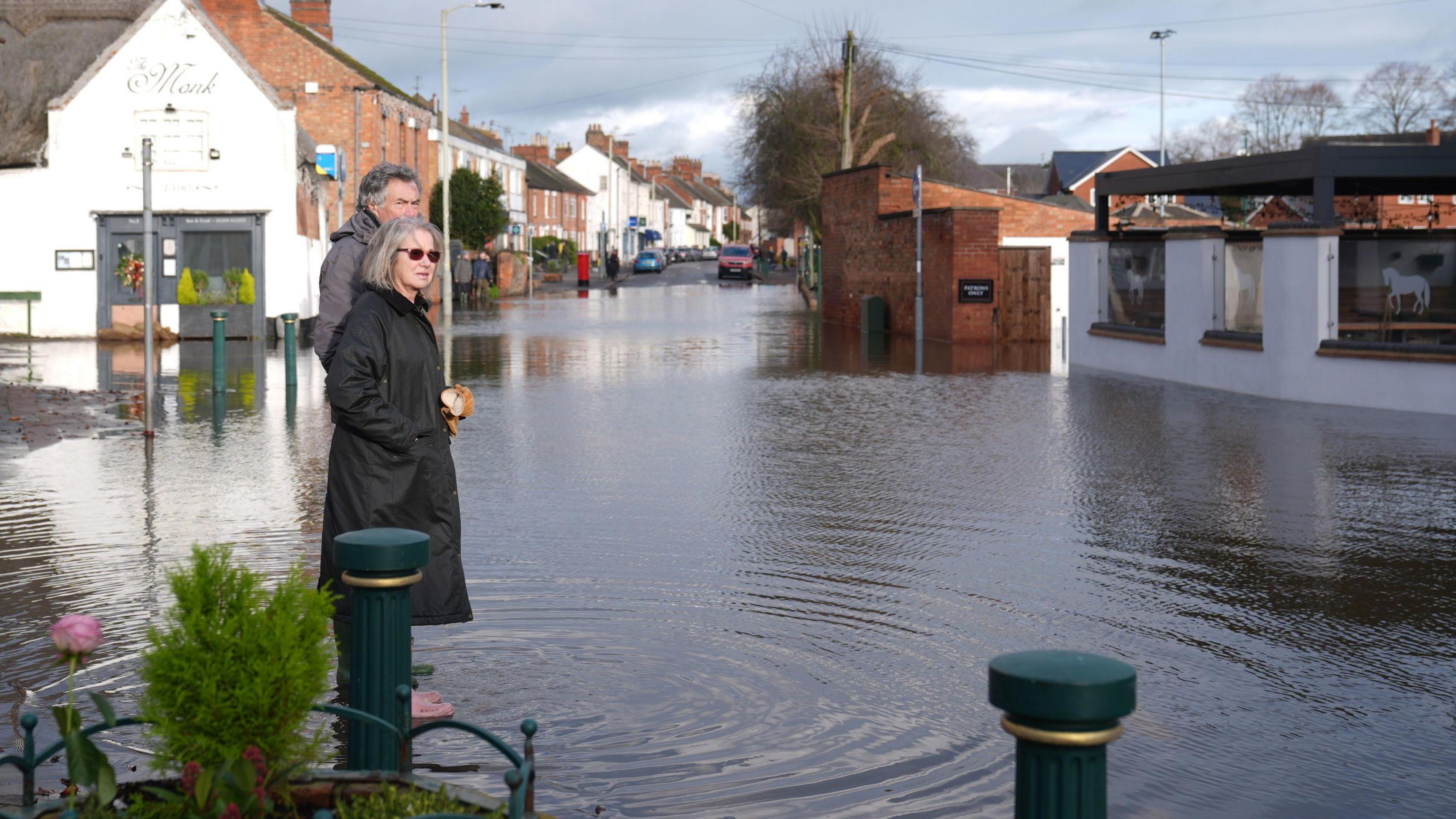
Quorn, in Leicestershire, was one of the villages flooded last week
What about the future?
In response to concerns about homes being built on flood plains, Mr Gable said: "The planning rules were changed in 2012 so that any new development can't increase the flood risk to anybody else."
He said this meant properties should be designed and built so that the flood risk was not higher than it would have been if the development was not there.
He added: "But, we do see the impacts of climate change. I have been in the Environment Agency about 20 years now and year-on-year, I see records being broken for rainfall and river levels."
For example, only last weekend, the agency saw the highest levels on the River Wreake, in Leicestershire, in recorded history.
He said: "So we are seeing an increase in flood risk... we are going to have to work with the water.
"Part of that is building more resilience into properties.
"Things like plug sockets higher up so that the electrics do not need to be replaced if the property was to be flooded."
He added in terms of existing properties at risk of flooding, the EA could provide support to protect them individually.
He said they also needed to work on natural flood risk management - like in the Peak District, where there is investment in planting sphagnum moss.
"That will lock the water in the moors rather than it flowing off quickly into the river," he added.
Is digging your own flood defences a good idea?
Last week, residents in the Grange Park estate in Loughborough claimed they saved their homes from flooding by digging trenches around their estate.
Mr Gable said: "I can absolutely understand why people want to protect their properties and in some sense it is the right thing to do - they are understanding their own flood risk and protecting themselves from it."
However, he said it was "really important to do it properly".
"If an individual was to take some action which did increase the flood risk to somebody else or meant that somebody flooded, where they wouldn't have done before, then there is some potential legal liability, so it needs to be done really carefully," he said.
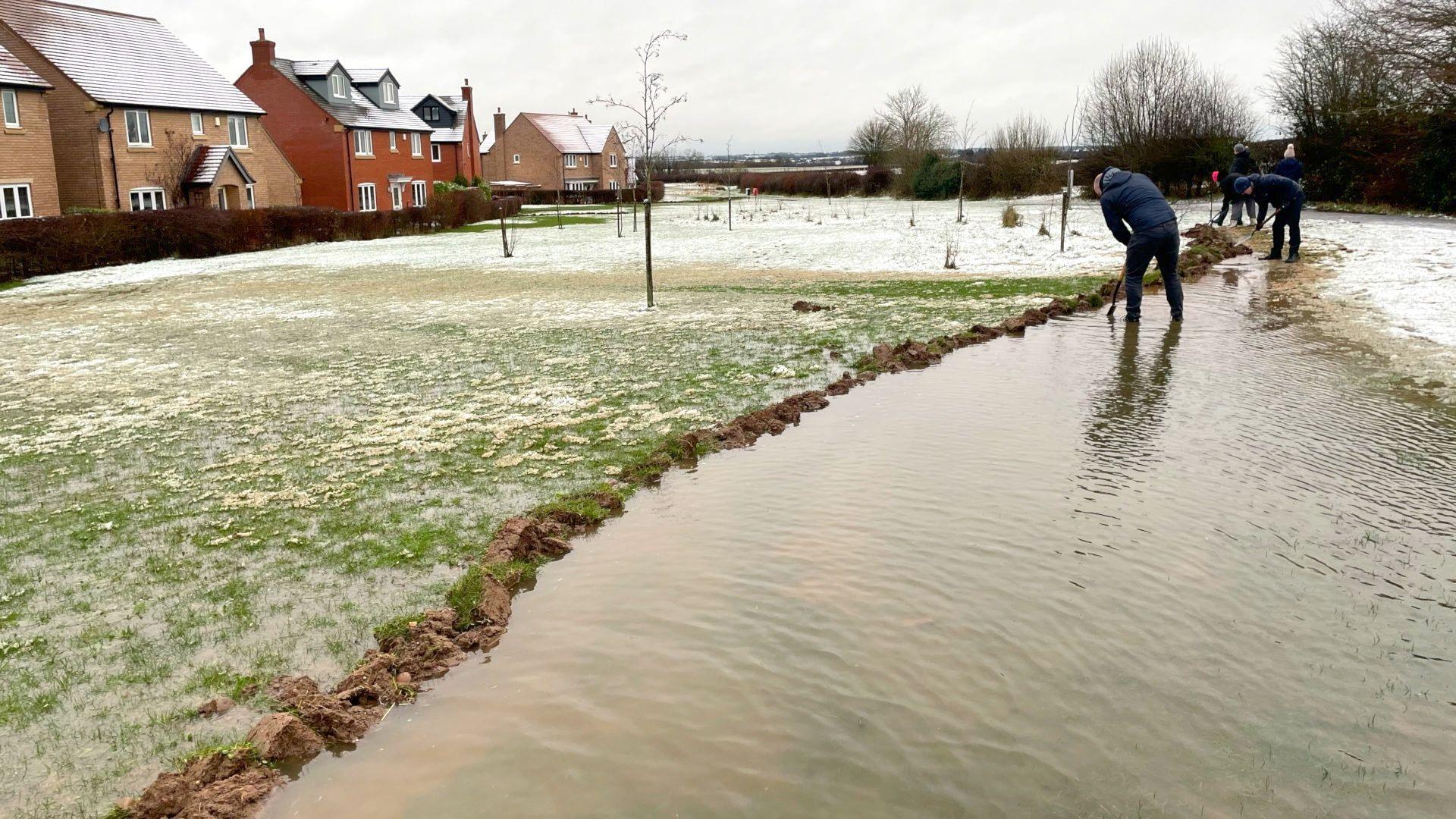
Residents in Loughborough decided to take matters into their own hands
Should the criteria for flooding funding be more flexible?
Mr Gable said: "We obviously are under a duty to spend the money in the most cost-effective way possible and that does lead to some challenging decisions."
He said sometimes for communities at risk of flooding, the agency was not able to release funding to build an individual defence.
"That's where things like the property level resilience comes in, where we can help those individual properties protect themselves," he said.
He added the agency worked closely with local authorities.
"We have spent £1 billion in the last year across the country - which was 16,000 properties better protected following [Storm] Babet and Henk," Mr Gable said.
Mr Gable's comments come after local authorities in the area called on the government to release more cash for flood-hit communities.
Will a new flood resilience taskforce help?
In September, the government announced, external a new Floods Resilience Taskforce to "turbocharge the development of flood defences and bolster the nation's resilience to extreme weather".
Mr Gable said: "It's early days for it, but better coordination is something I think we will all benefit from.
"Obviously, there are a lot of stakeholders within the world of flooding and anything which brings us closer together to get over things like the funding challenges... can only be a positive thing."
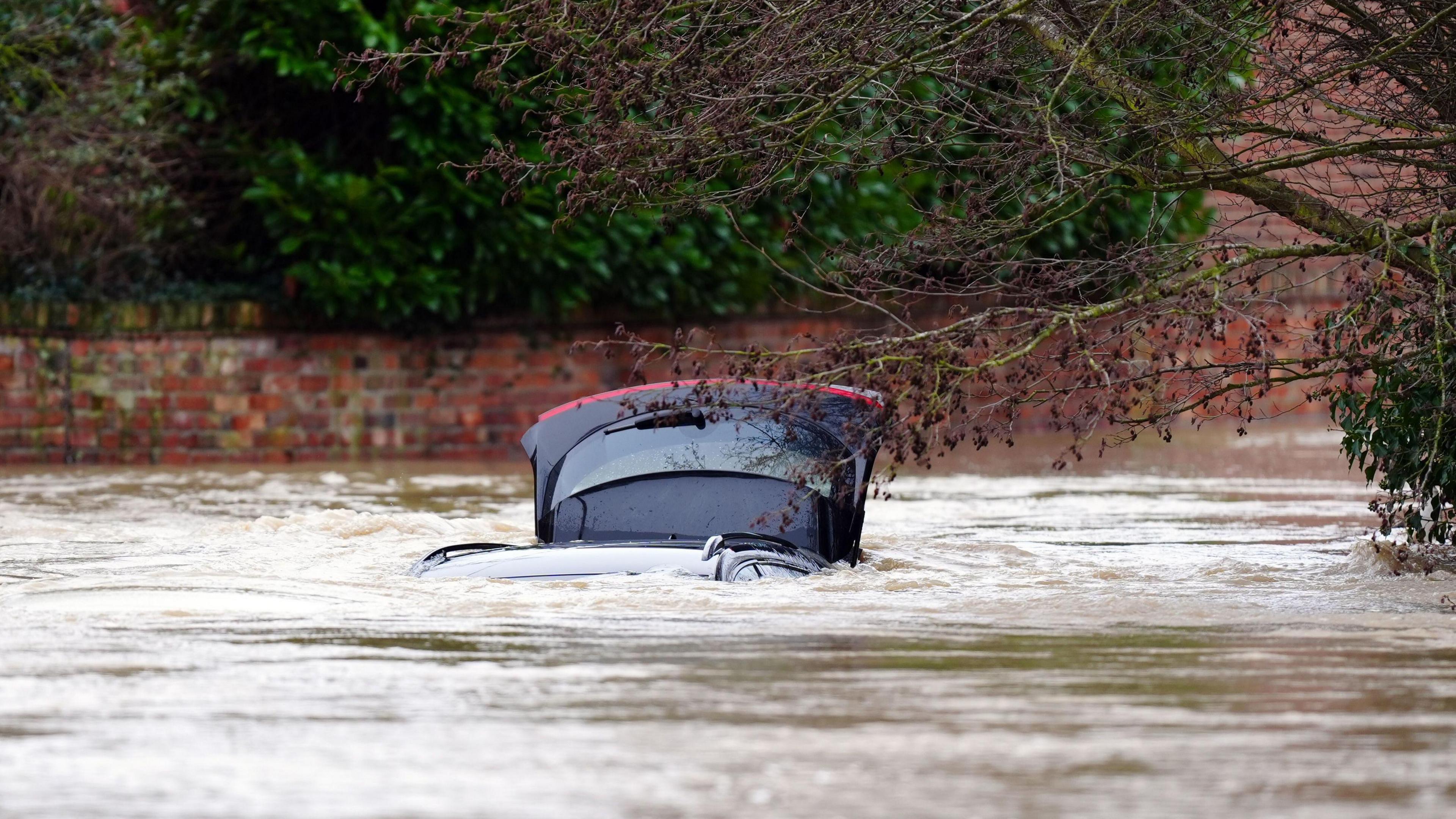
A vehicle was left submerged under water on 6 January in Bottesford after flooding
Get in touch
Tell us which stories we should cover in Leicester
Follow BBC Leicester on Facebook, external, on X, external, or on Instagram, external. Send your story ideas to eastmidsnews@bbc.co.uk, external or via WhatsApp, external on 0808 100 2210.
Related topics
- Published14 January
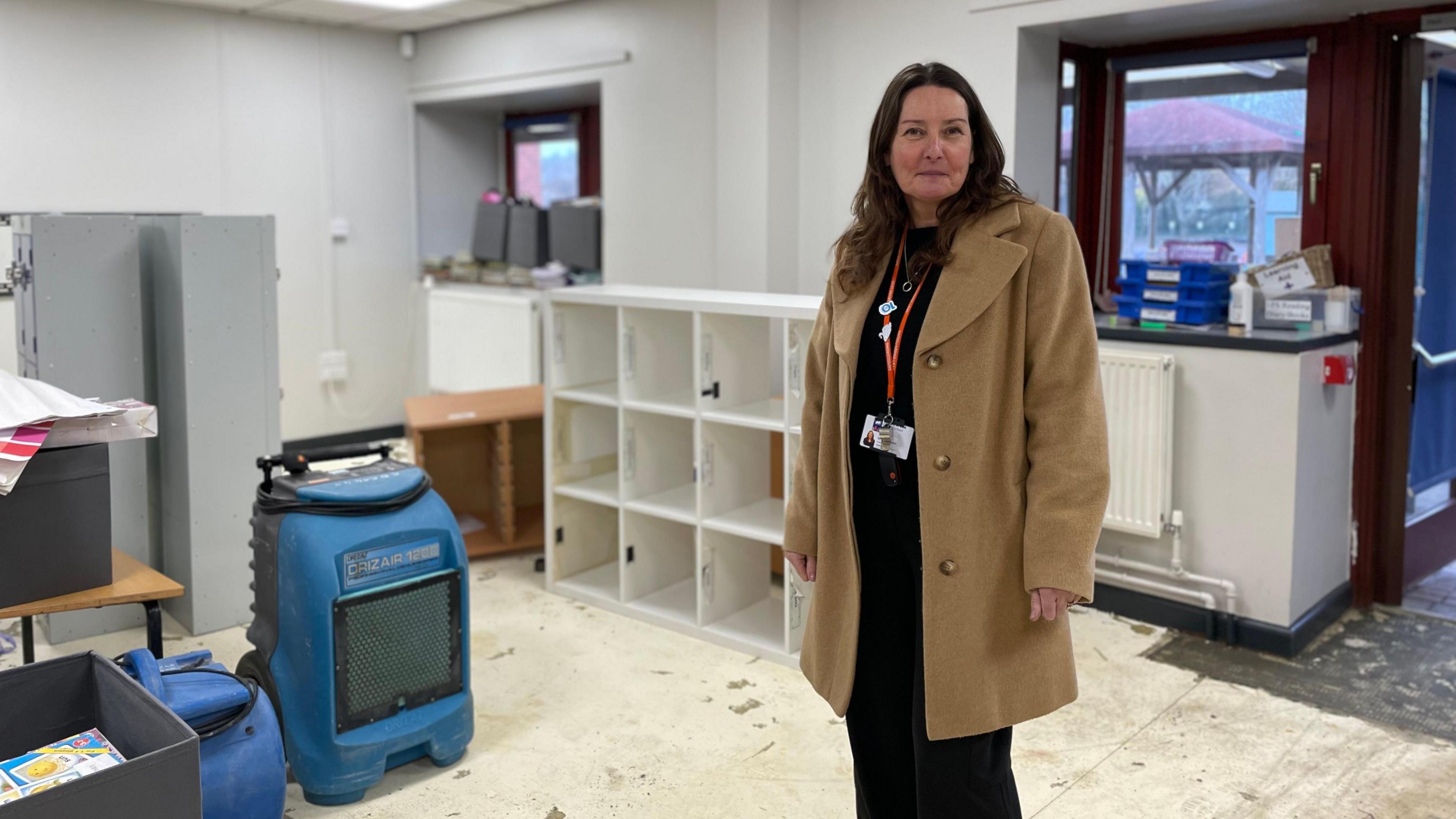
- Published9 January
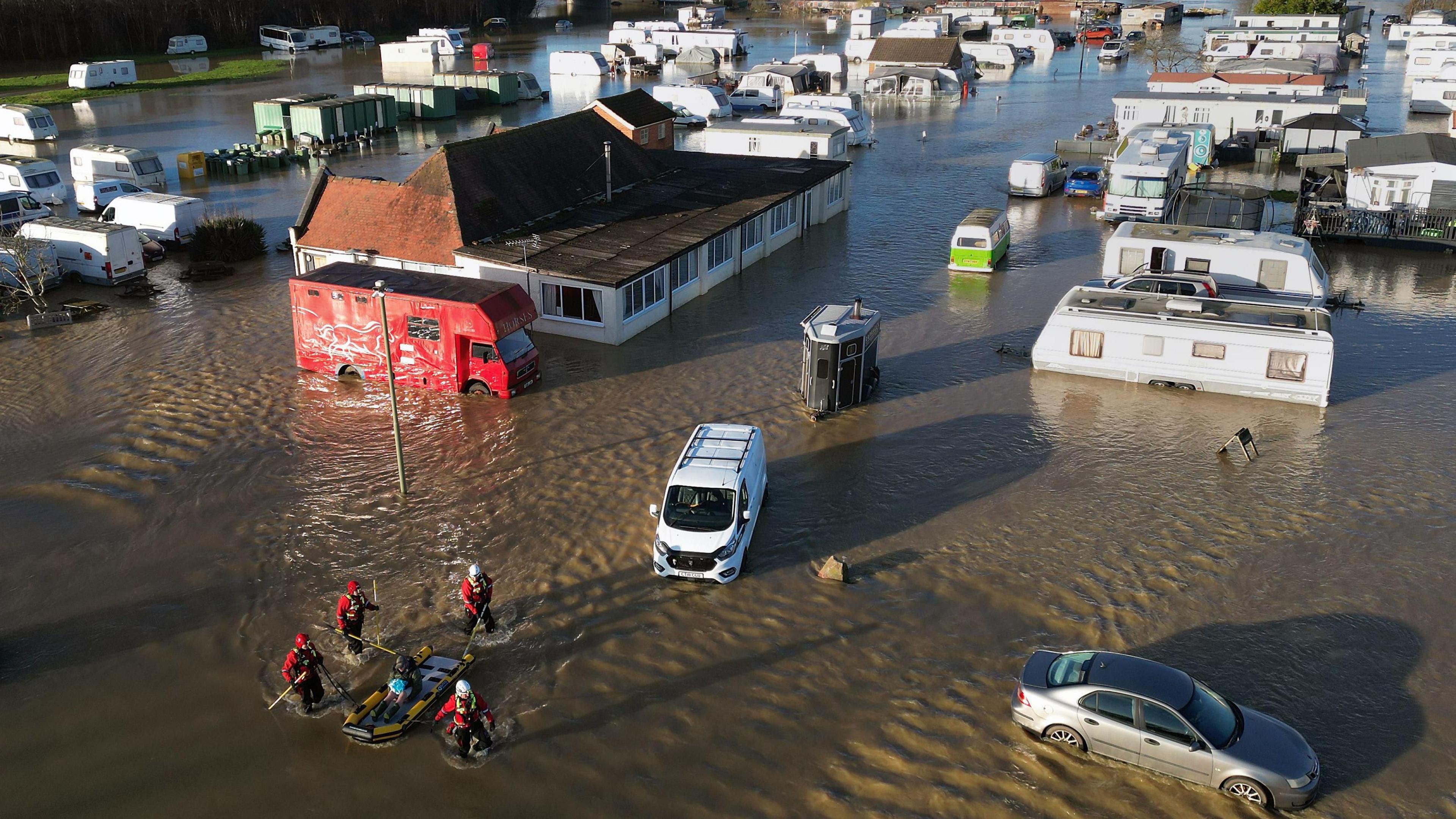
- Published6 January
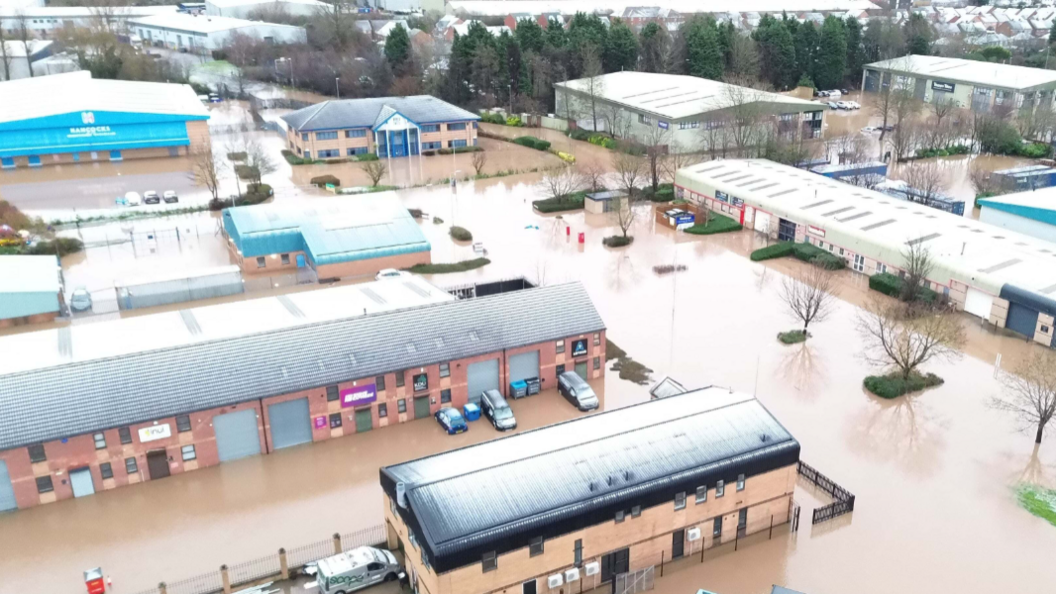
- Published17 December 2024
